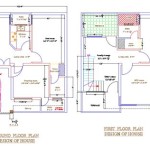Mini Trellis for House Plants: Supporting Growth and Enhancing Aesthetics
Mini trellises are increasingly popular accessories for indoor plants, offering a practical and visually appealing solution for supporting climbing or vining species. These scaled-down versions of traditional garden trellises provide a framework for plants to ascend, promoting healthier growth and enhancing the overall aesthetic of indoor spaces. Their size and versatility make them suitable for a wide range of houseplants, from trailing pothos to delicate jasmine.
The use of mini trellises extends beyond mere support; they contribute significantly to the plant's health and appearance. By guiding the plant's growth upwards, these structures encourage better air circulation and light exposure, crucial factors for photosynthesis and overall vigor. Furthermore, they prevent stems from sprawling across surfaces, minimizing the risk of damage and creating a more organized and attractive display.
Benefits of Using Mini Trellises
Mini trellises offer a multitude of advantages for both the plant and its caretaker. Understanding these benefits can inform the decision to incorporate trellises into indoor plant care routines.
First and foremost, mini trellises provide physical support. Many houseplants, particularly those with vining or climbing habits, require external support to maintain an upright or desired growth pattern. Without a trellis, these plants may droop, trail excessively, or become tangled, hindering their development and potentially leading to breakage. The trellis offers a stable framework that the plant can grip onto, allowing it to reach its full potential.
Improved air circulation is another key benefit. When plants are allowed to spread horizontally, their foliage can become dense and restrict airflow. This lack of circulation creates a humid environment that is conducive to fungal diseases and pest infestations. A trellis elevates the plant's foliage, promoting better ventilation and reducing the risk of these problems. This is particularly important for plants that are susceptible to powdery mildew or other fungal infections.
Optimized light exposure is also facilitated by the use of a mini trellis. By allowing the plant to grow vertically, the trellis ensures that more leaves are exposed to sunlight. This increased light exposure enhances photosynthesis, the process by which plants convert light energy into chemical energy for growth. Plants that receive adequate light are generally healthier, more vigorous, and produce more vibrant foliage and flowers.
Aesthetic enhancement represents a significant advantage. Mini trellises transform ordinary houseplants into visually striking focal points. They offer a way to showcase the plant's natural beauty and add a touch of elegance to any room. The trellis can be chosen to complement the plant's foliage and the room's décor, creating a cohesive and harmonious look. This is especially true for decorative trellises made of materials like metal or bamboo that act as ornaments in themselves.
Space optimization is another practical benefit. In smaller living spaces, every inch counts. Mini trellises allow for vertical growth, maximizing the use of available space. This is particularly helpful for apartment dwellers or those with limited floor space. A trellis can transform a trailing plant into a compact, upright specimen, freeing up valuable surface area and making the room feel less cluttered.
Types of Mini Trellises
Mini trellises come in a diverse range of materials, designs, and sizes, catering to various plant types and aesthetic preferences. Selecting the right type of trellis is crucial for ensuring optimal support and visual appeal.
Plastic trellises are a popular and affordable option. They are lightweight, durable, and easy to clean. Plastic trellises come in various shapes and sizes, and they are often weather resistant, making them suitable for both indoor and outdoor use. However, some plastic trellises may lack the aesthetic appeal of other materials.
Metal trellises offer a more elegant and durable alternative. They are typically made of steel, wrought iron, or copper, and they can be powder-coated to prevent rust and corrosion. Metal trellises are strong and sturdy, capable of supporting heavier plants. They often feature intricate designs and can add a touch of sophistication to any room.
Bamboo trellises provide a natural and eco-friendly option. Bamboo is a sustainable material that is both lightweight and strong. Bamboo trellises have a rustic charm and blend seamlessly with most indoor plant arrangements. They are also relatively easy to assemble and customize.
Wooden trellises offer a classic and versatile look. They can be made from various types of wood, such as cedar, pine, or redwood, and they can be painted or stained to match any décor. Wooden trellises are sturdy and durable, and they provide excellent support for climbing plants. However, they may require occasional maintenance to prevent rot or decay.
DIY trellises present a creative and cost-effective option. Using readily available materials like branches, wire, or twine, individuals can create custom trellises that perfectly suit their plants' needs and their personal style. DIY trellises allow for endless customization and provide a unique and personalized touch to indoor plant displays.
Beyond the materials, mini trellises also vary in design. Ladder trellises offer a simple and classic look, with vertical rungs that plants can easily climb. Hoop trellises provide a circular frame that guides the plant's growth in a rounded shape. Obelisk trellises feature a tapered design, creating a dramatic and eye-catching display. Fan trellises spread out like a fan, providing ample support for sprawling plants.
Selecting and Installing a Mini Trellis
Choosing and installing a mini trellis involves several considerations to ensure the best outcome for the plant and the overall aesthetic of the space. Matching the trellis to the plant's specific needs is crucial.
Consider the plant's size and growth habit as a primary factor. Taller plants with vigorous growth require a larger and sturdier trellis than smaller, more delicate plants. The trellis should be proportionate to the plant's size and capable of supporting its weight as it matures. For plants with tendrils, a trellis with smaller openings or horizontal supports will provide ample gripping points. For plants that climb by twining, a trellis with vertical supports will be more suitable.
Assess the plant's weight and stability requirements. Some plants, such as heavy vines or flowering species, require a robust trellis to prevent them from toppling over. Opt for a trellis made of sturdy materials like metal or wood for added support. Ensure that the trellis is securely anchored in the pot to prevent it from shifting or falling over, especially when the plant becomes top-heavy.
Evaluate the trellis materials and their suitability for the plant's environment. If the plant is kept in a humid environment, choose a trellis made of rust-resistant materials like plastic or powder-coated metal. Avoid using trellises made of untreated wood in humid environments, as they are susceptible to rot and decay. Consider the aesthetic appeal of the trellis and how it complements the plant and the surrounding décor. Choose a trellis that enhances the plant's beauty and adds a touch of elegance to the space.
Installing a mini trellis is typically a straightforward process. Begin by gently inserting the trellis into the plant's pot, taking care not to damage the roots. Position the trellis close to the base of the plant, providing immediate support for the stems or vines. As the plant grows, gently guide the stems or vines onto the trellis, using plant ties or clips to secure them in place. Monitor the plant's growth and adjust the ties or clips as needed to ensure that the plant is properly supported. Avoid tying the stems too tightly, as this can damage them and restrict their growth.
Regularly inspect the trellis and the plant for any signs of damage or decay. Replace the trellis if it becomes weakened or damaged. Prune the plant as needed to maintain its shape and prevent it from becoming too overgrown. Regularly clean the trellis to remove any dust or debris that may accumulate. This will help to maintain its appearance and prevent the spread of pests or diseases.
Consider the overall presentation of the plant and trellis. Ensure that the trellis is positioned in a way that maximizes light exposure and air circulation. Arrange the plant and trellis in a visually appealing manner, considering the plant's size, shape, and color. Add other decorative elements, such as pebbles or moss, to enhance the overall aesthetic of the display.
By carefully selecting and installing a mini trellis, individuals can provide optimal support for their houseplants, enhance their visual appeal, and create a thriving indoor garden.

Plant Trellis For Pots Diy With Natural Materials Greenhouse Studio

Indoor Plant Trellis Garden Style Design Décor Gift Leaf Node

Plant Trellis For Pots Diy With Natural Materials Greenhouse Studio

I Made A Miniature Trellis Out Of Kebab Skewers Reddit Plants Houseplant House

Diy Infinity Circle Or Hoop Trellis For Indoor Potted Plants So Easily Distracted

Copper Plant Trellis Small For Indoor Choose Shape Gifts Hoya

Indoor Plant Trellis Garden Style Design Décor Gift Leaf Node

Diy Indoor Plant Trellis From Bamboo Rope Dossier Blog

Plant Trellis For Pots Diy With Natural Materials Greenhouse Studio

Travelwant Indoor Trellis Small For Potted Plants Stackable House Plant Climbing Decorate Com








